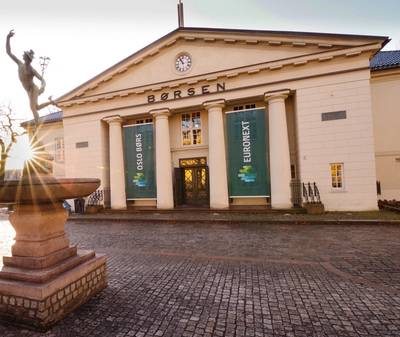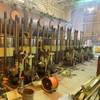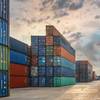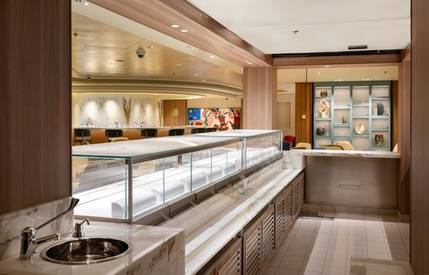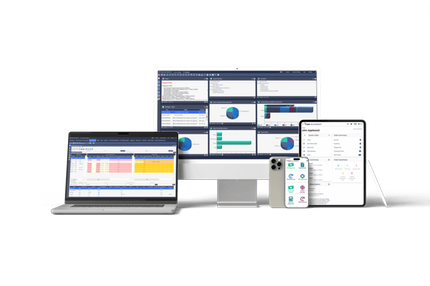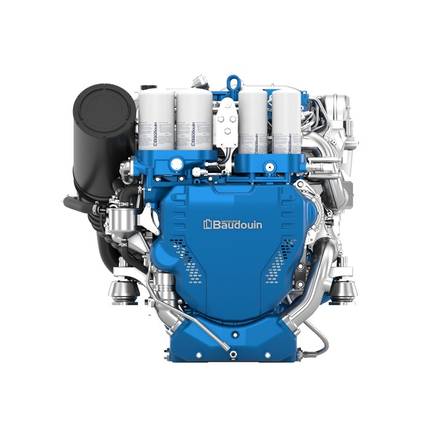Follow the Money: Norway is Fertile Grounds for Shipping Projects
With the world’s largest sovereign wealth fund, Norway’s financial muscle is beyond question. Howev-er, at a corporate level, the country’s capital markets offer a range of benefits to overseas companies seeking equity, debt … or both.
Øivind Amundsen is CEO of Oslo Børs and, as you would expect, a strong advocate of the Norwegian capital as a place to raise money for marine-related projects. The diverse nature of the companies which are listed on the Børs, part of Europe’s largest stock exchange group, Euronext, since 2019, re-flects what some believe to be the world’s most attractive location to raise capital.
The Euronext group has its own appeal. Before the acquisition, the standalone Oslo Børs had succeed-ed in establishing a strong presence within energy, shipping, and seafood, Amundsen explained. Through the pandemic, however, cleantech and renewable energy companies have listed there.
Deep pockets are certainly part of the story. But Oslo’s advantages go much further.
As part of Euronext, companies and investors have access to the trading platform Optiq, the largest liquidity pool in Europe. On the other hand, Oslo Børs contributes to the group with its experience and ways of working. With Nord Pool, Fish Pool, and Euronext Securities, Oslo helps to support the stock exchange group’s Nordic ambitions.
“The investor base in Oslo has a deep understanding and tradition for investing in the whole extent of the shipping industry,” Amundsen explained . “Historically, the relationship between Oslo Børs and shipping goes back to its very roots. Many of the first companies listed and trad-ed on the exchange were local family-controlled shipowners.
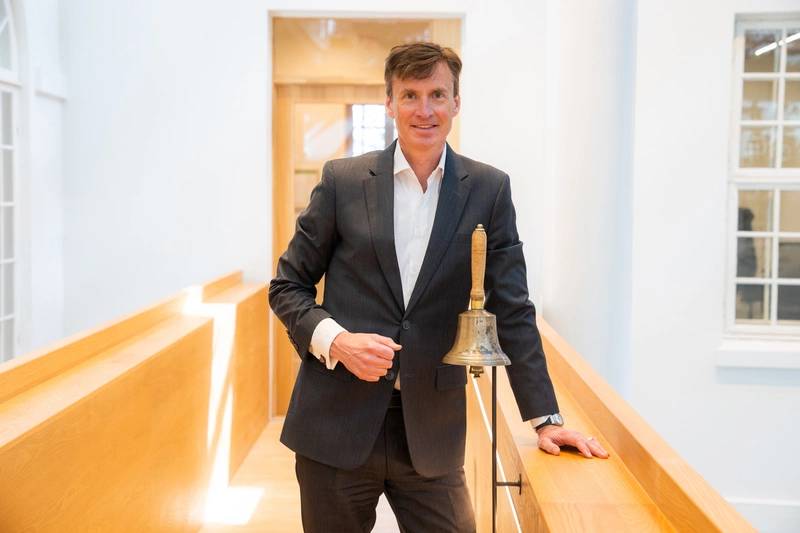
“Historically, the relationship between Oslo Børs and shipping goes back to its very roots. Many of the first companies listed and traded on the exchange were local family-controlled shipowners." Øivind Amundsen, CEO, Oslo Børs
“This has contributed to develop the strong businesses and shipping/maritime clusters that we have in Norway today. Following this, an extremely knowledgeable ecosystem has developed. This is why Oslo Børs has succeeded in attracting international companies within shipping, such as MPC Container Ships (see below). However, investors have a keen appetite not only for the large, well-established corporates such as BW Group, Kongsberg and Yara and companies owned by John Frederiksen, but also for smaller more niche ventures. TECO2030, for example, is developing hydrogen fuel cells and has successfully raised capital in Oslo via a series of private placements.
Other examples include offshore wind installation specialists Cadeler, Seaway 7 (Subsea 7), Himalaya Shipping, a niche dry bulk operator, Höegh Autoliners, Wilhelmsen, Fred Olsen’s Bonheur, and so on.
“What really makes the investor community stand out … is that both retail and institutions see shipping as a mainstay investment, rather than a niche,” Amundsen explained. “This provides availability of capital and liquidity throughout cycles and, in return, the companies are expected to be transparent and have a shareholder focus.”
The strength and depth of the ‘ecosystem’ is another key element in Oslo’s success. It is made up of a network of financing institutions such as the large Nordic banks, DNB and Nordea, Amundsen said, but also an unparalleled group of generalist and niche investment banks with a broad coverage of all shipping subsectors, and spanning both equity and debt markets.
“When it comes to shipping, you really do not see the same range or interest in New York or Singapore,” he declared.
As a prominent player in the offshore wind sector, Norway’s capital markets could prove attractive to US firms seeking equity and/or debt. Oslo Børs already has a strong track record in the sector, with early pioneers including Bonheur and, more recently, Edda Wind.
“Fixed-bottom and floating is certainly growing,” Amundsen noted, “but is less prevalent in the capital markets as of now. Certainly Oslo Børs and the Norwegian capital market is the obvious place to float by way of private placement, IPO, or debt financing for any company related to offshore wind.”
Case study: MPC Container Ships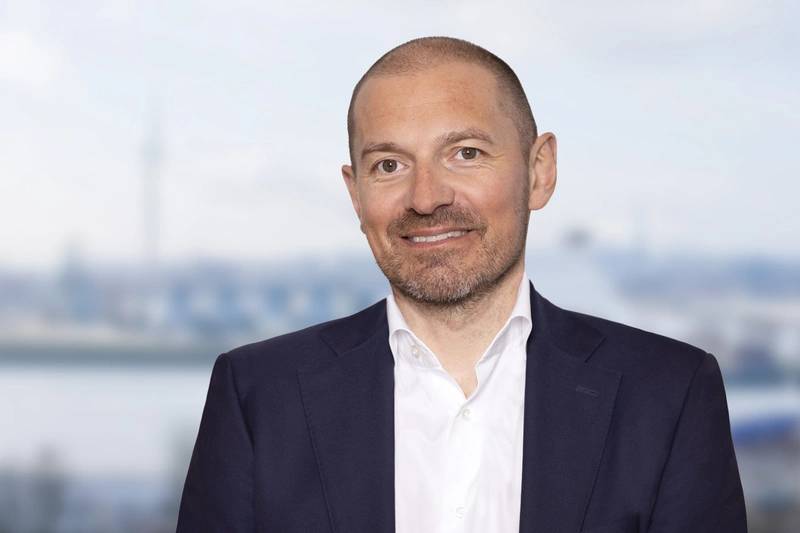 Shortly after inception, in April 2017, MPC Container Ships was listed on Oslo Børs’ OTC market. During the following 18 months, its principals set up a challenging timetable of over 750 investor meetings and by May 2018, MPC Container Ships was listed on the Oslo Børs’ main market. By then, it had raised $460m in equity and $200m in bonds and had bought 69 container vessels.
Shortly after inception, in April 2017, MPC Container Ships was listed on Oslo Børs’ OTC market. During the following 18 months, its principals set up a challenging timetable of over 750 investor meetings and by May 2018, MPC Container Ships was listed on the Oslo Børs’ main market. By then, it had raised $460m in equity and $200m in bonds and had bought 69 container vessels.
Pål Sætre, EVP and General Manager Norway, MPC Container Ships
Feeder container ships may not appear the most likely shipping assets to appeal to Norwegian investors accustomed to offshore energy and aquaculture. But if MPC Container Ships’ story is anything to go by, then it seems that Norwegian investors have a diverse appetite.
The company’s EVP and General Manager Norway, Pål Sætre, believes that the country’s close relationship with the sea can mean that with a good story, Oslo is potentially a very attractive arena in which to raise capital. Investors there, he says, have deep pockets for a good story.
The Hamburg-based company was established in April 2017 by sponsor and founding shareholder, MPC Münchmeyer Petersen Capital AG (MPC Capital).
Today, as one of the world’s largest owners of intra-regional container tonnage, it operates more than 60 geared and gearless ships in global feeder trades.
Shortly after inception, in April 2017, MPC Container Ships was listed on Oslo Børs’ over-the-counter market. During the following 18 months, its principals set up a challenging timetable of over 750 investor meetings and by May 2018, MPC Container Ships was listed on the Oslo Børs’ main market. By then, it had raised $460m in equity and $200m in bonds and had bought 69 container vessels, becoming the world’s largest owner of intra-regional tonnage.
To be fair, fate has dealt the young feeder company a spectacular hand. The onset of the pandemic brought global supply chains to the public’s attention as never before. Sætre notes that this was evident everywhere, even in prosperous Oslo where the grounding of the Ever Given in the Suez Canal caused delays on most shipped goods.
But as arterial container ships have increased in size and shoreside Covid-related congestion became a major issue in many regions, the importance of distributive feeder trades came into sharp focus among the world’s public at large. In economic terms, these regional trades are essential and inelastic.
Between 2020 and 2022, MPC Container Ships’ operating revenues shot up from $171.9m to $616.8m. Adjusted EBITDA soared from $16.2m to $451.5m.
Sætre points out several key features that set Oslo apart as a city in which shipping projects are well received. The investment community is accustomed to capital intensive sectors, notably both tradi-tional and now sustainable offshore energy, and shipping is a key aspect of the country’s everyday life.
Investors are more accustomed to and potentially comfortable with risks related to asset-heavy and volatile industries, he says. And he notes a strong current shipping presence, as it has been historically, on Oslo Børs.
However, it is the Norwegian ecosystem that sets Oslo apart, Sætre believes. Apart from knowledgeable investors, there is a vibrant network of shipping-related service providers including brokers, analysts, investment banks, mainstream banks and law firms.
This network, coupled with a swift and pragmatic approach to documentation and the overall capital raising process, means that companies aiming to tap Norway’s investment community may well enjoy the fastest speed to market that can be achieved anywhere.



